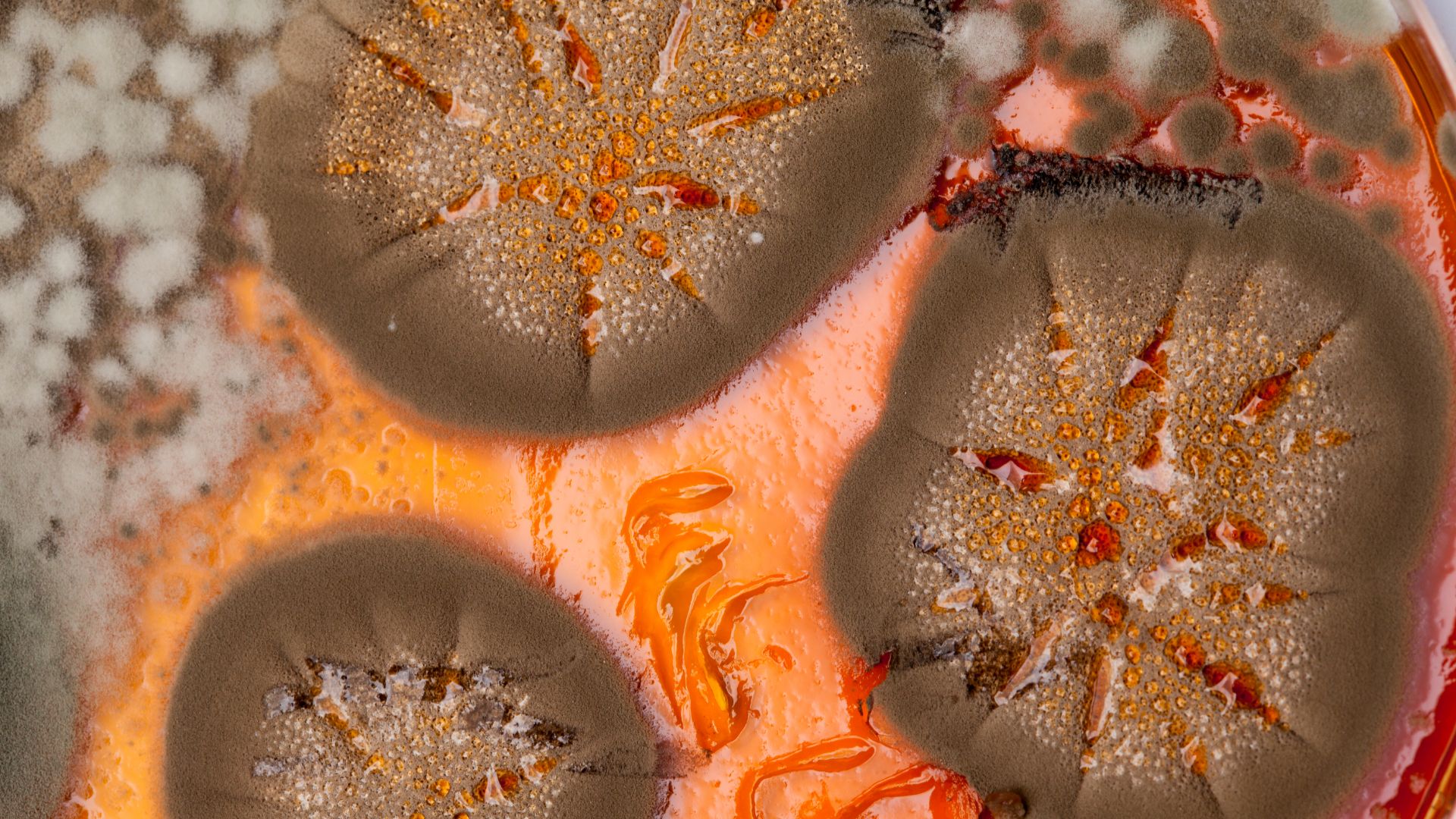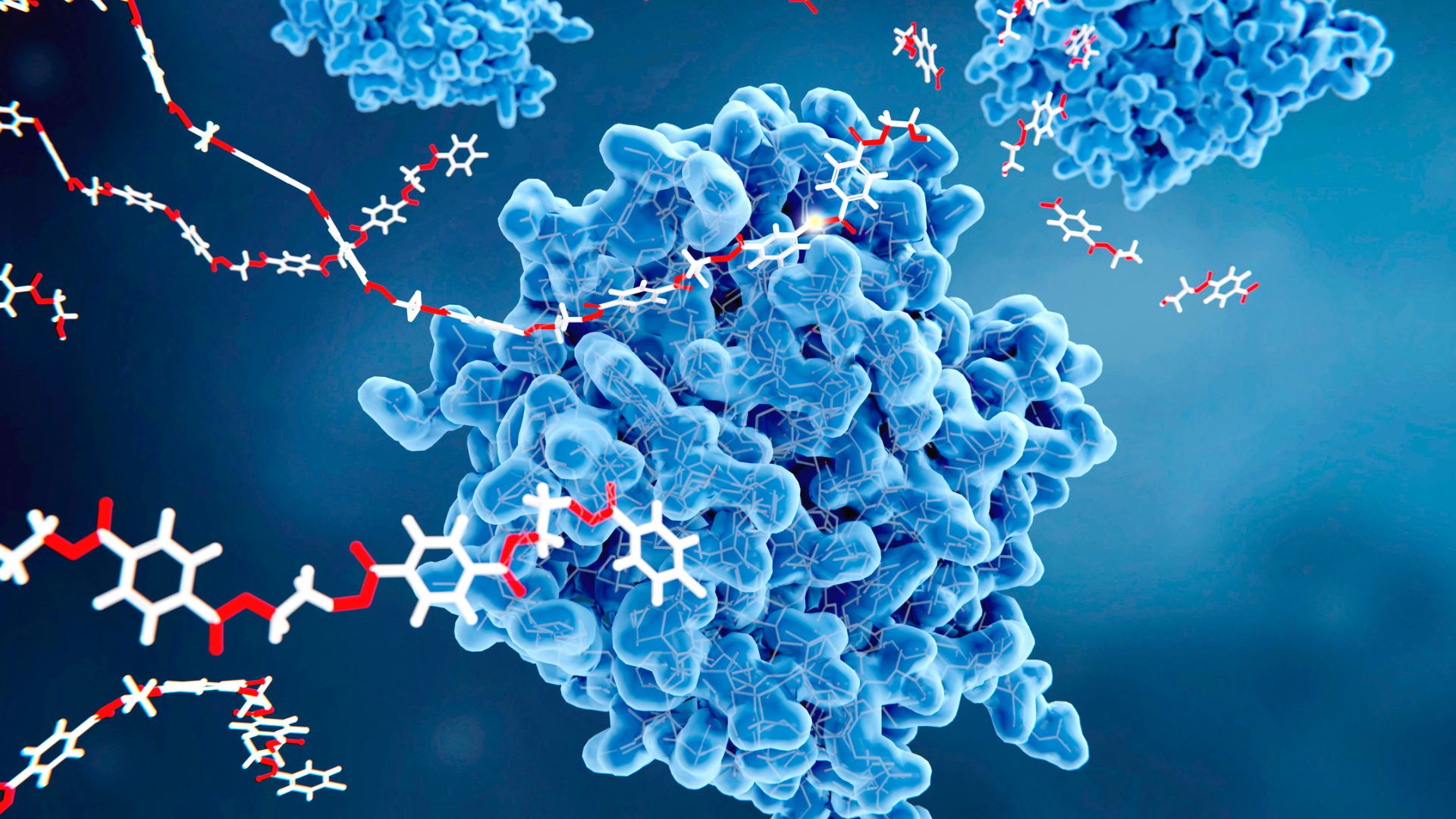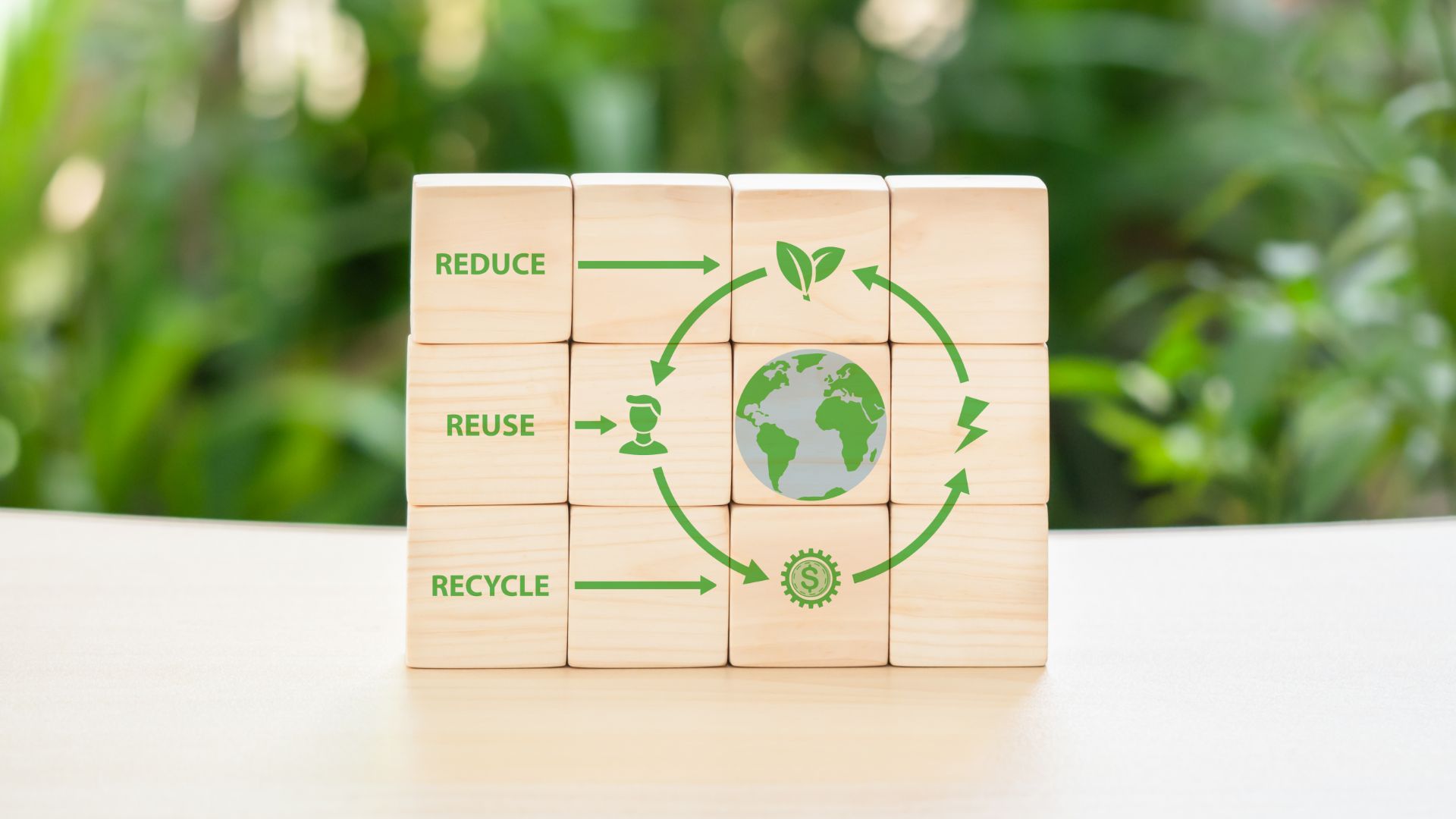Environment
Can Biology Address the Microplastics Problem?
Microbes and enzymes break down plastics. What we do with them next is as important in tackling the microplastics problem
Feb 13, 2024
[DALL-E]
Everywhere scientists look, they find microplastics. This teeny-tiny plastic debris appears in the air, waterways, oceans, soil, and even our bodies. Early studies show that in humans, they could be disrupting the immune system and causing DNA damage. They adversely impact a wide range of ecosystems and facilitate the accumulation of toxic chemicals.

For these reasons, removing microplastics, and plastics in general, from the environment is critical for both planetary and human health. Their small size and persistence in the environment make it a huge challenge. “Microplastics can be found moving through systems more readily than larger particles,” said Laura Hug, an environmental microbiologist at the University of Waterloo.
Bioremediation, defined as the use of living organisms to remove environmental pollutants, offers a promising approach to eliminating different kinds of plastics. In nature, living organisms act on plastics, albeit very slowly. These inform biological strategies for breaking down plastics. Some of these include using a host of different bacteria, algae, and fungi, as well as plastic-degrading enzymes found in these organisms.
Microbes Take On Microplastics
PlasticDB, a database of microbes with plastic-degrading capabilities, lists 633 species. These are microbes demonstrated in the scientific literature to break down plastics ranging from polyethylenes and polystyrenes to polyhydroxybutyrates. Considering that we have only discovered a minuscule fraction of microbial species, it’s highly likely that many more efficient microbes are still undiscovered.
This is why sampling the microbial diversity continues to be a favored approach to developing bioremediation solutions. For example, Spanish company Darwin Bioprospecting Excellence samples the microbial diversity to find microbes that can degrade polyethylene and polypropylene, among other plastics.
“We have a portfolio of microbial strains that, we know from genetic analysis of their genomes and have experimentally verified as well, that they can biodegrade a long list of chemical compounds,” said Manuel Porcar, the company’s CEO.
Multiple studies report that a consortium of microbes that act together is more efficient than a single species. For its bioremediation projects, Darwin finds that simple consortia work better. “What we do is select the key players from the complexity out there and try to combine them,” said Porcar. “They have to be metabolically complementary, of course.“ These key players can belong to different groups of microbes as in nature.
Other solutions work with only a single group of microbes. Swedish startup MycoMine develops MycoCube, which, as the name suggests, is a fungal bioremediation tool. Compared to other microbes, fungi are “not so dependent on climate parameters like temperature and pH. They’re easy to grow, easy to handle, and they don’t need light,” said the startup’s CEO, Magnus Ivarsson.

Ivarsson added that MycoCube’s portability means it can be installed where waste treatment is required. This reduces the cost and environmental impact of moving waste to a centralized treatment plant. It is also modular and is suitable for bioremediation needs ranging from smaller units to industrial-scale projects.
Researchers are also engineering microbial species with improved plastic-degrading capabilities. However, they are limited in scope because of regulations against releasing genetically engineered microbes into the environment.
Plastic-Eating Enzymes
The catalytic activity of plastic-degrading microbes is due to the presence of enzymes that can act on chemical bonds in plastic polymers. Using enzymes instead of microbes is more cost-effective and versatile. As an alternative to microbes, synthetic biology companies and researchers are experimenting with enzymes as a bioremediation tool.
Bioengineer Sierin Lim of Nanyang Technology University in Singapore is tackling polyethylene terephthalate (PET) waste with microbial enzymes. The kind of enzymes we are working on are PETases,” said Lim. PETase was first isolated in 2016 from plastic waste collected in Japan.

In nature, PET could take hundreds or thousands of years to decompose. Lim said scientists are “trying to improve PETase through either rational design or directed evolution.” While the former uses computation and insights into enzyme structure and function, the latter technique relies on generating enzyme variants and screening them for their bioremediation potential. Lim added that AI is also increasingly used in enzyme engineering.
Hug believes that improved enzyme efficiency has the most potential for increasing the efficiency of microplastic bioremediation. Like microbial diversity, the repertoire of enzymes in nature may have many hidden gems. “I think that's likely to come from a naturally occurring organism rather than by engineering the enzymes we've already identified,” Hug added.
As with microbial consortia, researchers are exploring enzyme cocktails that combine the benefits of multiple enzymes acting in tandem. With in vitro metabolic engineering, scientists can optimize enzymes to act on different plastic breakdown pathways. It could be a more reasonable solution in the future, as plastic waste is rarely composed of a single type of plastic polymer.
Like other synthetic biology efforts globally, Lim’s research group is engineering new enzymes to break down plastics that are better variants compared to those in the wild. However, breaking plastics down is only part of the solution. What do we do with the monomers left behind after breaking down the plastics?
Circular Carbon Economy
When it comes to biodegradation technologies, microplastics pose no unique challenges as compared to chunkier plastics. They are easier to degrade because they have a greater surface area for microbes and enzymes to act on. But that’s when they are collected and brought to a site for bioremediation at scale. Bioremediation solutions that degrade plastics in natural environments, such as seaweed and earthworms for cleaning marine ecosystems and soils, respectively, are early and limited in scope.

The alternative is to degrade them before they spread to ecosystems, such as in wastewater treatment facilities or factories that produce plastic waste. When plastics are broken down in a contained environment like this, either generated onsite or collected elsewhere, they can be transformed into something valuable. Carbon atoms make up about 80 percent or more of the weight of plastics. These can be upcycled into sustainable fuels, bioplastics, and other biomaterials.
In addition to removing existing plastics, this closes the carbon loop and averts emissions from fossil-based production of these materials. “Biology is uniquely poised to enable this circular carbon economy,” said Kit McDonell, Director of Communications at synthetic biology company LanzaTech. She is also Chair of the Climate Tech and Environment Track for SynBioBeta 2024: The Global Synthetic Biology Conference. McDonell has been instrumental in driving the session topics for this track, and there will be sessions addressing many of the themes discussed here. Specifically, there will be a session entitled “Bioremediation and Biorecycling for the Circular Economy.”
LanzaTech uses engineered bacteria to upcycle carbon-rich gases, such as those generated by industrial sites or through the gasification of solid waste, into commodity chemicals. Regarding the company’s spin-off LanzaJet, McDonell said that “they take ethanol and convert it into sustainable aviation fuel. They just opened the world’s first commercial scale ethanol-to-sustainable aviation fuel facility last month.”
While LanzaTech’s technology is agnostic of the kind of waste, other upcycling approaches are specific to plastic waste. “For this part, we're going to feed the monomers to engineered microbes so that they can convert that into other value-added molecules," said Lim. Simultaneously, researchers also engineer better enzymes to convert monomers into valuable molecules.
Bioremediation should be seen as complementary to physical or chemical remediation for breaking down plastics. Because of its scale and complexity, tackling plastic pollution requires employing all possible methods for its elimination. That’s also true for upcycling plastic monomers. Tackling the diversity of polymers while enabling carbon-neutral upcycling requires advancing all current technologies and the development of new ones.


















